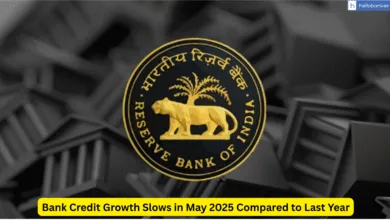Approx 50,000 small business closed resulting in 3 lac job loss: Govt data

| ➡️ Get instant news updates on Whatsapp. Click here to join our Whatsapp Group. |
Over the past decade, the closure of nearly 50,000 small businesses has resulted in over 300,000 job losses, according to the government. In a written reply, the Minister for Micro, Small, and Medium Enterprises (MSMEs), Jitan Ram Majhi, informed the Lok Sabha on Thursday that out of the million registered MSMEs, 49,342 have shut down, leading to the loss of 317,641 jobs. These job losses are part of a total MSME workforce of 181.6 million registered on the Udyam registration portal since its inception on July 1, 2020.
Details of MSME Closures and Job Losses
Minister Majhi stated, “Of these, 0.17% or 49,342 enterprises with employment of 317,641 de-registered or showed closure on the portal during the last ten years.” According to the latest annual Periodic Labour Force Survey (PLFS) reports, the estimated unemployment rate for persons aged 15 years and above was 4.2% in 2020-21, 4.1% in 2021-22, and 3.2% in 2022-23, as reported by the Ministry of Labour and Employment.
Regional Impact of MSME Closures
The data provided by Minister Majhi highlighted that Maharashtra experienced the highest number of MSME closures, with 12,233 businesses shutting down and resulting in 54,053 job losses. This was followed by Tamil Nadu (6,298 closures, 43,324 job losses), Uttar Pradesh (3,425 closures, 33,230 job losses), Gujarat (4,861 closures, 22,345 job losses), and Bihar (2,414 closures, 15,317 job losses). Madhya Pradesh, under BJP rule for over 19 years, saw the closure of 1,653 MSME units, leading to the loss of 11,727 jobs. Other regions affected include Delhi (947 closures, 8,210 jobs lost), West Bengal (1,548 closures, 8,856 jobs lost), and Kerala (1,336 closures, 12,672 jobs lost). The minister attributed these closures to various factors, including changes in company ownership, redundant certificates, and duplicate registrations.
Budgetary Measures to Support MSMEs
In her seventh budget speech on Tuesday, Finance Minister Nirmala Sitharaman announced several measures to boost the MSME sector. The budget emphasized financial and technological support for MSMEs, including a credit guarantee scheme for machinery loans without collateral, a self-financing guarantee fund offering up to ₹100 crore per borrower, and a new assessment model for MSME credit by public sector banks based on digital footprints. Additionally, the budget proposed enhanced credit support during stress periods to prevent MSMEs from becoming non-performing assets (NPAs), raised the Mudra loan limit to ₹20 lakh, and planned to open 24 new SIDBI branches in MSME clusters within three years. E-commerce export hubs will also be established in a public-private partnership (PPP) mode to help MSMEs and traditional artisans access international markets with a seamless regulatory framework.
Contribution of MSMEs to Exports and GDP
Currently, MSMEs contribute about 45% to the country’s total exports, according to a Global Trade Research Initiative (GTRI) report. However, experts believe there is immense scope to increase this share further. A report jointly published by Niti Aayog and the Foundation for Economic Development in March this year noted that exports remain an under-utilized opportunity for MSMEs, even as they are called the powerhouse of the Indian economy and contribute significantly to employment generation, exports, and overall economic growth. Citing data from the Udyam portal, the Niti Aayog report stated that despite the opportunity for MSMEs to pursue exports, only 0.95% of MSMEs are engaged in it. Out of the 15.8 million MSMEs registered on Udyam, only over 150,000 units claimed to export their goods and services.
Challenges in MSME Exports
In terms of MSME exports through the e-commerce route, data from GTRI showed that India significantly lags behind a comparable economy like China. GTRI data indicated that in 2022, MSMEs in China exported goods worth over $200 billion through e-commerce platforms, while India’s e-commerce export was barely $2 billion that year. The focus on MSME exports has gained momentum at a time when India’s merchandise exports dipped 3.11% year-on-year in FY24 to $437.06 billion, according to data from the Commerce Ministry.
Economic Impact of MSMEs
MSMEs contribute about 27% to India’s GDP and employ more than 110 million people, making them the second largest employer in the country, after agriculture.

Please guide me about forecast of Tata Power